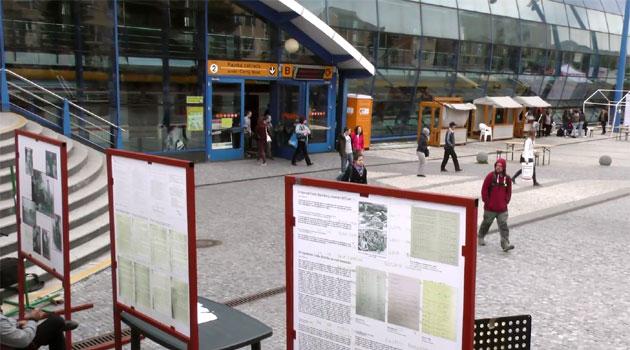Exhibit touring Prague shows how Roma lived before being imprisoned in concentration camps

Various locations around Prague will once again see the travelling exhibition “A Vanished World” („Zaniklý svět“) this month, about and by indigenous Czech Roma and Sinti people and created by the Committee for the Redress of the Roma Holocaust (Výbor pro odškodnění romského holocaustu – VPORH). Through rare early-20th century photographs and archival materials the exhibition presents the life of the Roma and Sinti in the Czech lands up to and including their imprisonment in the Nazi concentration camps.
EXHIBITION SCHEDULE
- 1 – 3 August – Prague 5 in front of the Church of Saint Wenceslas (kostel Sv. Václava), náměstí 14. října 17, metro Anděl
- 8 – 10 August – Prague 6, Vítězné nám. 5, in front of the General Staff of the Army of the Czech Republic, metro Dejvická
- 14 – 18 August – Prague 13 Municipal Department, in the entry hall, Sluneční nám. 2580/13, metro Stodůlky
“Visitors will familiarize themselves with what the life of Romani people looked like prior to the Second World War. They will see Romani people proudly posing for photographs in front of their caravans. They can imagine what these people were like who were almost completely annihilated just because the Nazis espoused an ideology about racial superiority,” Čeněk Růžička, chair of the VPORH, told news server Romea.cz when the exhibition tour began earlier this year.
“The exhibition displays photographs and archival materials we have shown previously, but augmented with new ones that startled even me, for example, documentation of how the Protectorate Interior Ministry stood with respect to the management of the camps. I believe these exhibits can change our assessment of the events that transpired at Lety u Písku and Hodonín u Kunštátu,” the VPORH chair said.
Part of the exhibition is dedicated to the Romani members of the resistance, for example, Josef Serinek and others. It also discusses how Romani people were persecuted on the territory of the Slovak State.
When creating the exhibition the authors were inspired by the approach taken toward the Holocaust by Jewish survivors. “We want to speak openly about the events of the Second World War as they actually happened. I realize that in this country that requires a bit of courage,” Růžička said, “but what I tell myself is that the average person who stops by to take a look at the exhibition panels cannot remain unaffected by what he reads and sees.”
ARCHIVAL VIDEO